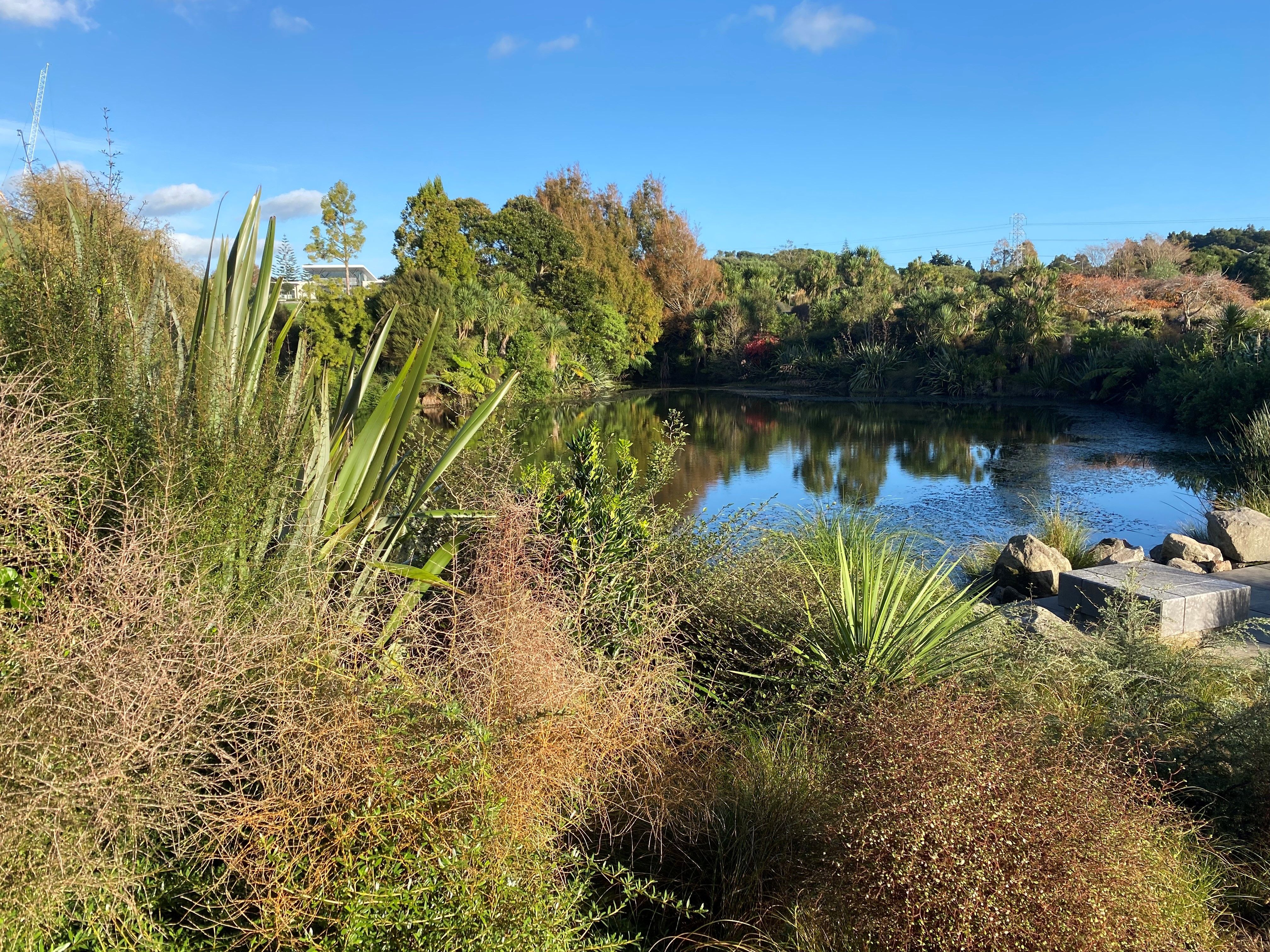Water sensitive design features: their function and effectiveness over ten years in a botanic garden
DOI:
https://doi.org/10.24823/Sibbaldia.2022.2004Keywords:
water sensitive design, rain garden, swale, plant selectionAbstract
Water sensitive design (WSD) is a nature-based solution to urban stormwater problems which involves intercepting rainfall and stormwater from impervious surfaces using a range of devices. These devices rely on soils and plants to slow water flows, reduce water volumes and improve the quality of the water reaching our rivers, streams, lakes and oceans. Common devices used in Auckland, New Zealand are rain gardens and swales. Auckland Botanic Gardens (ABG) has applied a variety of these devices, often in ‘treatment trains’ and focusing on the use of native New Zealand plants, to solve an on-site environmental problem. ABG additionally supports research, advocates for the selection and effective maintenance of the native New Zealand plants, and educates the public about WSD. Recommendations for plant selection in Auckland for rain gardens and swales are made based on ten years of observations and trials at ABG.
References
AUCKLAND BOTANIC GARDENS (2023). Sustainable water management. Available online: www.aucklandbotanicgardens.co.nz/media/2929/236056-stwater-dle.pdf (accessed May 2023).
AUCKLAND REGIONAL COUNCIL (2001). Riparian zone management: strategy for the Auckland Region. Technical Publication 148.
AUCKLAND REGIONAL COUNCIL (2003). Stormwater management devices: design guidelines manual. Technical Publication 10.
AUCKLAND TRANSPORT (2021). Bioretention planting guide. Right plant. Right place. Right maintenance. Version 1. Available online: https://at.govt.nz/media/1991233/auckland-transport-bioretention-planting-guide-version-one-may-2021.pdf (accessed May 2023).
BODLEY, E., SIMCOCK, R. & STANLEY, R. (2022). Plant evaluations for living roofs in Auckland, New Zealand. Sibbaldia, 21: 57–74. doi: https://doi.org/10.24823/Sibbaldia.2022.377
EUROPEAN COMMISSION, DIRECTORATE-GENERAL FOR RESEARCH AND INNOVATION (2021). Evaluating the impact of nature-based solutions: a handbook for practitioners. Publications Office of the European Union, Luxembourg.
FASSMAN-BECK, E.A. & SIMCOCK, R. (2013). Living roof review and design recommendations for stormwater management. Prepared by Auckland UniServices for Auckland Council. Auckland Council Technical Report TR2013/045.
KULLER, M., BACH, P.M., RAMIREZ-LOVERING, D. & DELETIC, A. (2012). Framing water sensitive urban design as part of the urban form: a critical review of tools for best planning practice. Environmental Modelling and Software, 96: 265–282. doi: https://doi.org/10.1016/j.envsoft.2017.07.003
LEWIS, M., SIMCOCK, R., DAVIDSON, G. & BULL, L. (2010). Landscape and ecology values within stormwater management. Prepared by Boffa Miskell for Auckland Regional Council. Auckland Council Technical Report TR2009/083.
MANAAKI WHENUA LANDCARE RESEARCH (2023). Soils Map Viewer. Available online: https://soils-maps.landcareresearch.co.nz/?layername=fsl_nzsc&idcolumn=&idvalue=&mapfile=fsl&srs=EPSG:2193&mode=normal#maps (accessed September 2023).
METSERVICE (2023). Climate summary at MetService. Available online: https://about.metservice.com/our-company/learning-centre/climate-summary (accessed July 2023).
NATIONAL INSTITUTE OF WATER AND ATMOSPHERIC RESEARCH (2023). 2023 so far: NZ’s record-breaking weather. Available online: http://niwa.co.nz/news/2023-so-far-nzs-record-breaking-weather (accessed July 2023).
ORTHEIL, M. (2009). Stormwater device design for the Auckland Botanic Gardens LID project. Unpublished diploma thesis, Fachhochschule Munster University of Applied Sciences.
PEARCE, P., BELL, R., BOSTOCK, H., CAREY-SMITH, T., COLLINS, D., FEDAEFF, N., KACHHARA, A., MACARA, G., MULLAN, B., PAULIK, R., SOMERVELL, E., SOOD, A. ET AL. (2020). Auckland Region climate change projections and impacts. Revised September 2020. Prepared by the National Institute of Water and Atmospheric Research, NIWA, for Auckland Council. Auckland Council Technical Report TR2017/030-3.
PUDDEPHATT, J. (2008). Low impact design solutions for the Auckland Botanic Gardens, MWH New Zealand Ltd. Unpublished report.
SHAVER, E. (2008). Auckland Botanic Gardens Lake Management and Low Impact Design Discussion and Recommendations, Aqua Terra International Ltd. Unpublished report.
SIMCOCK, R. & DANDO, J. (2013). Mulch specification for stormwater bioretention devices. Prepared by Landcare Research New Zealand Ltd for Auckland Council. Auckland Council Technical Report TR2013/056.
YOUNG, D., AFOA, E., MEIJER, K., WAGENHOFF, A. & UTECH, C. (2013). Temperature as a contaminant in streams in the Auckland region, stormwater issues and management options. Prepared by Morphum Environmental Ltd for Auckland Council. Auckland Council Technical Report TR2013/044.
YUAN, J. & DUNNETT, N. (2018). Plant selection for rain gardens: response to simulated cyclical flooding of 115 perennial species. Urban Forestry and Urban Greening, 35: 57–65. doi: https://doi.org/10.1016/j.ufug.2018.08.005

Downloads
Published
Issue
Section
License
Copyright (c) 2022 Emma Simpkins, Robyn Simcock, Bec Stanley, Jack Hobbs

This work is licensed under a Creative Commons Attribution 4.0 International License.
Please read our Open Access, Copyright and Permissions policies for more information.





